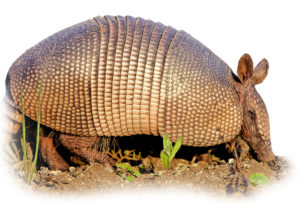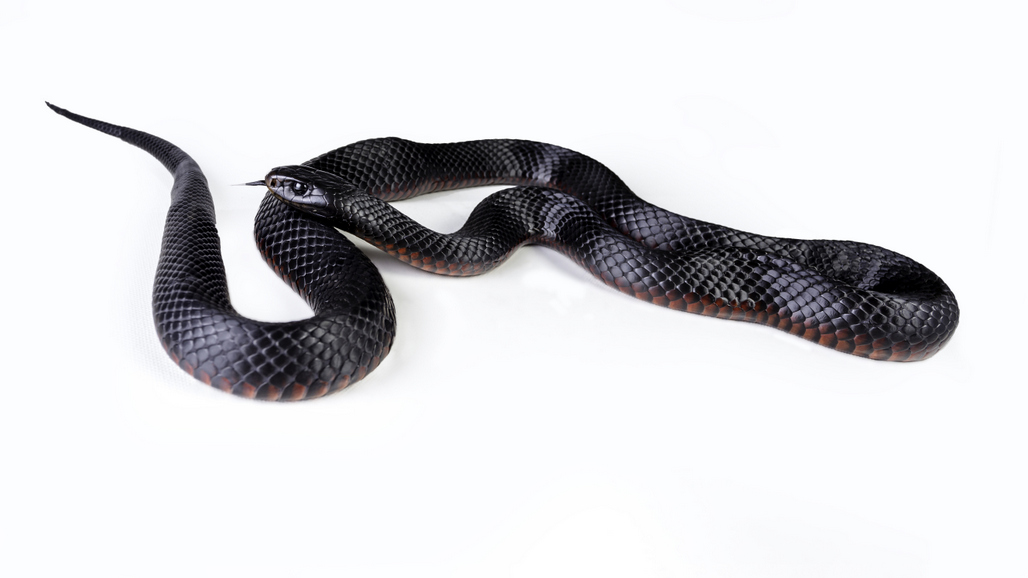Call Us About Armadillos! 864-546-1016

Armadillo Trapping and Removal
Trapping and removal of pest armadillo may require special regulation compliance. Armadillos are usually not aggressive animals but wild animals can be unpredictable when they feel threatened. It is always safer to allow trained specialists to trap and remove nuisance wildlife. Armadillos are carriers of the bacterium that causes Leprosy. The wildlife specialist at All About Wildlife Control understand the health and safety risks of dealing with each wild animal and we have the knowledge and experience to safely and effectively solve your nuisance armadillo problem.
Call All About Wildlife Control today at (864) 546-1016 to get rid of armadillos and to prevent armadillo problems.
All About Wildlife Control in Greenville, Anderson, and Seneca, SC is your trusted armadillo control and removal expert.
Armadillo Prevention and Control
Eradication of food sources (grubs and insects) is not very feasible and is not a desirable solution for the environment. Armadillos have the ability to climb and burrow. Excluding armadillos with fencing that is buried underground and tilts out at a 40% angle may be suitable for small areas or garden spaces. Trying to exclude armadillos from large areas could be costly and may not create the aesthetics you desire. Trapping and removal of nuisance armadillos is the best control method for the homeowner who has armadillo damage in their lawn or flower beds. Cleaning up brush piles and reducing dense cover that armadillos like is a habitat modification that can discourage armadillos from making burrows on your property.
Armadillos are unique looking animals that resemble an opossum with body armor. Armadillos have strong legs and long claws that are designed for digging. The nine-banded armadillo has protective bony armor that covers it’s head, body, and tail. The bony armor has nine movable rings between the armadillos shoulder and hip shield. The tail armor has 12 bony rings. The head of the nine-banded armadillo is small with a long narrow pig like snout. Because the armadillo primarily eats grubs and insects, they do not need canine or incisor teeth. The armadillo has seven to nine peg-like cheek teeth on each side of its upper and lower jaw. The average armadillo weighs from 8 – 17 pounds and is about the size of an opossum.
Armadillos are normally active from dusk through early morning hours in the summer. In the winter the armadillo may be active only during the day due to its poor ability to warm itself with blood flow. The armadillo usually digs burrows that are 7” – 8” inches in diameter and up to 15 feet long and use these for shelter and raising young. Armadillos will dig burrows in rock piles, brush piles, around stumps, or in terraces around brush and dense woodlands. Armadillos will dig several burrows in an area to use for escape locations.
Armadillos have unique reproduction characteristics and reach sexual maturity around one year of age. The female armadillo will produce one litter of pups each year that are quadruplets. The female has one fertilized egg that divides into four genetically identical eggs, all sharing the same placenta. Mating usually occurs during summer and the female armadillo has the ability to delay implantation of the fertilized egg. Pregnancy usually does not begin for three to four months which allows young to arrive in spring when food is more plentiful. Stressed female armadillos can delay implantation of a fertilized egg for longer periods of time. The armadillo litter is born after a 150 day gestation period, usually arriving in March or April.
Armadillos have poor eye sight but have a very good sense of smell. While cumbersome in appearance, the armadillo can run well when in danger and is an avid swimmer. Armadillos can also walk on the bottom of small streams. Armadillos can hold their breath for up to six minutes. To help them swim, armadillos fill their stomach and intestines with air. The armadillo’s strong legs are used to paddle like a dog.
Armadillos do not try to enter your house or buildings, but they may burrow underneath these structures. Armadillos are built to dig and they will dig multiple burrows in their home range to provide areas for denning, raising young, and for escape burrows. Because the armadillo likes to dig extra burrows for places to escape from predators, you may have an armadillo dig burrows under your house, building, sidewalk or driveway. Armadillo burrows are 7” – 8” inches in diameter and can be 15 feet long. The excavation of these burrows can cause settling in building foundations and result in cracking of sidewalks or driveways.
Armadillos prefer dense, shady cover and like areas adjacent to creeks, rivers, and lakes. Armadillos prefer areas with loose and porous soils that are easy to dig. Armadillo will also utilize areas that have cracks, crevices and rocks that are suitable for burrows. Armadillos are insectivores and primarily eat insects and grubs that they dig up. Armadillos also eat earthworms, spiders, scorpions and other invertebrates. Armadillos like loose moist soils that are easy to dig and harbor a buffet of insects and grubs. Well maintained yards with nice landscaping and mulch provide an excellent dining area for armadillos. Armadillos will also eat maggots and pupae in carrion (dead animals). Dead animals are often found along roadways and this food source combined with the armadillo’s nocturnal nature often results in armadillos being hit by cars. The nine-banded armadillo also jumps straight up into the air as a defense to startle predators. While this can be helpful in a natural setting, the jumping instinct of the nine-banded armadillo is fatal on roadways with over passing automobiles. Armadillos may also eat skinks, lizards, small frogs and snakes, as well as the eggs of these animals, but this is not the armadillo’s primary food source.
Armadillos are not aggressive animals but they do have strong legs and large sharp claws. Handling armadillos carelessly could cause incidental injury to humans. Armadillos are also a carrier of the bacterium that causes Leprosy (modern day Hansen’s Disease). It is estimated that approximately 20% of wild armadillos carry the bacterium for Leprosy. It is also estimated that possibly 95% of humans are resistant to the bacterium that causes Leprosy. While these statistics seem to reduce the risks of contracting Leprosy from an armadillo, it is prudent to understand the risks associated with armadillos and take necessary precautions to protect yourself and your family.
Armadillo damage is primarily associated with the armadillo’s diet of insects and grubs. While digging and rooting for insects, armadillos can destroy your lawn and flower beds. Armadillos do not normally cause direct damage to agricultural crops, although armadillos may dig for insects in a plowed field or garden and inadvertently damage planted seed or crops. The burrowing of armadillos can cause structural damage to houses, buildings, sidewalks and driveways. Armadillos have poor eye sight and will often walk along walls and houses, rubbing their shells again exterior walls. These scraping noises can disturb sleeping people at night.



